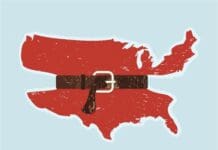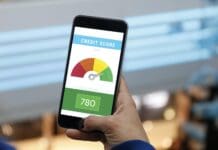On Monday, the National Association for Business Economics released a new survey predicting the biggest economic growth the United States has seen since 1984. 37 years ago, the country experienced huge growth as it also came out of a recession. Now that COVID-19 pandemic worries are slowly going away, analysts believe that the country’s business sectors and the overall economy will grow as a result.
This is a slight change in optimism from business economists who in April were disheartened by the job growth reports. The latest May job growth reports also haven’t improved as much as many analysts were hoping, though it appears many are still choosing to be reasonably optimistic about the country’s future economy this year.
Initially, there were quite large expectations when it came to the job force and economy earlier this year. Those large expectations were very hopeful. Now, with the latest numbers helping business economists understand exactly where the country stands, they are able to tailor their expectations to reflect something more reasonable and grounded in reality and numbers. As a result, they do expect big growth in the economy.
This is for many reasons. As more people in the United States become vaccinated this summer, more people will have fewer worries related to the COVID-19 pandemic. These fewer worries will naturally help businesses, as more people will feel comfortable going out, gathering with friends, and spending money at businesses. This may also allow more jobs to open up, which can decrease the unemployment numbers and help grow the economy in the process.
As people are spending money, traveling, and somewhat going back to “normal” after the pandemic, the economy is predicted to naturally grow. According to these latest predictions, the economy is expected to grow, though analysts don’t expect the economy to go back to pre-pandemic levels until the end of this year or the middle of next year.
It’s also important to understand the latest May jobless claims and overall employment growth to understand the rate that this economic growth is happening. Unlike economists thought at the beginning of 2021, this isn’t an immediate resurgence. Instead, it will take time for workers to find jobs and reenter the workforce. However, economists are more optimistic now than they were after April reports came out — those numbers initially made them believe the U.S. economy wouldn’t return to pre-pandemic numbers until as early as 2023.
Because of the fluctuating job numbers, economists will likely change their predictions if things continue to fluctuate. May had fewer job growth numbers than they anticipated — but the month also had fewer jobless claim numbers, which is a positive. Fewer people are being laid off, but not enough people are reentering the workforce, at this moment in time.
It’s likely these numbers will change again as summer hits and more people become vaccinated. However, the optimistic outlook of economists hasn’t changed yet. About two-thirds of the National Association for Business Economics panel has optimistic outlooks about the U.S. economy’s future and believes that things will progress at a steady rate.













